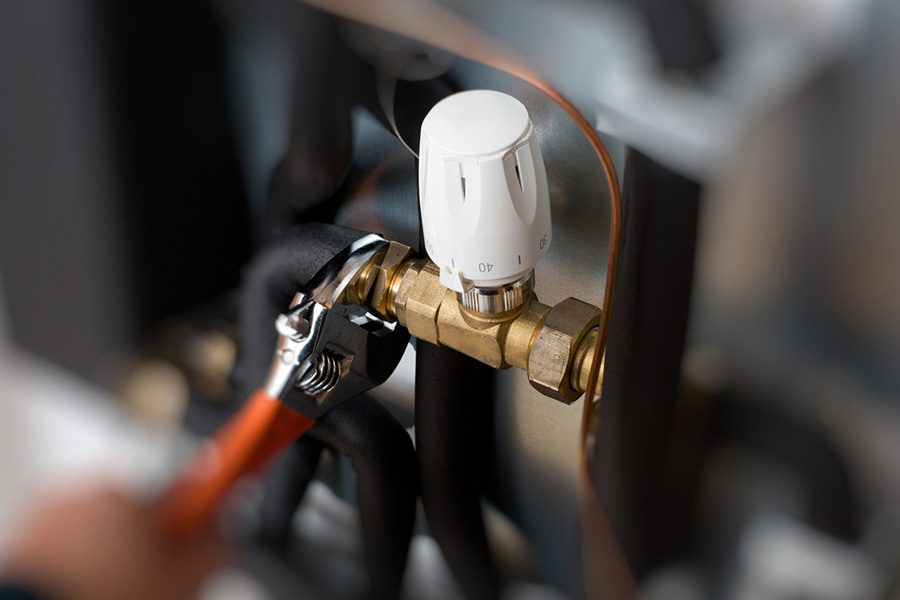Serving Nashville and the Middle Tennessee Area

The Maynard Man Wants You To Know This About Your Furnace Heat Exchanger
Hidden deep inside your furnace is a hardworking part you probably don’t think about—but your safety and comfort depend on it. The heat exchanger is responsible for delivering warm air to your home while keeping harmful gases where they belong: outside. When it’s in good shape, your system runs smoothly and safely. But if it cracks or begins to fail, your furnace efficiency can drop—and in some cases, your health could be at risk. That’s why The Maynard Man wants you to understand what this component does, how it can wear out, and what signs to watch for. A little awareness now can help you avoid costly repairs, reduce energy waste, and protect the people under your roof.
What Does a Heat Exchanger Actually Do?
The heat exchanger is the heart of your furnace’s heating process. It’s a metal chamber or coil that holds the extremely hot gases produced when your furnace burns fuel. As your system runs, air from your home passes over the outside of this sealed chamber. That air absorbs heat—without ever mixing with the combustion gases inside—and then travels through your vents to warm the house. The key word here is sealed. The heat exchanger’s job is to keep dangerous gases like carbon monoxide completely separate from the air you breathe. If a crack forms, that invisible line of safety disappears. Even though the heat exchanger isn’t something you can see, it’s one of the most important parts of your entire system—and everything else depends on it working properly.
Why the Heat Exchanger Is So Critical
Your heat exchanger may be hidden inside your furnace, but it plays a leading role in keeping your home warm and safe. When this component starts to fail, you might notice changes in comfort—or nothing at all—until there’s a serious issue. Here’s why it deserves more attention than it usually gets:
It Impacts Efficiency
If your heat exchanger is dirty, cracked, or warped, your system may struggle to heat the air effectively. The result? A furnace that runs longer, uses more energy, and drives up your heating bills—without delivering the warmth you expect.
It Protects Your Health
A damaged heat exchanger can leak carbon monoxide or other combustion gases into your home’s air supply. This isn’t just a comfort problem—it’s a safety issue. Even a small crack can allow fumes to escape, especially under high heat and pressure.
It’s Often Overlooked Until There’s a Problem
Because it’s not something homeowners can easily access or inspect, heat exchangers tend to go ignored until something fails. But by the time obvious symptoms show up, the damage may already be advanced—and the solution more costly.
Signs Your Heat Exchanger Might Be Failing
Your furnace won’t flash a warning light when the heat exchanger starts breaking down—but it will leave clues if you know what to watch for. The Maynard Man recommends keeping an eye (and ear) out for these potential red flags:
Soot or Rust in the Furnace Cabinet
If you spot black, dusty residue or patches of rust inside your furnace, it’s time to take a closer look. These signs often point to incomplete combustion or internal corrosion, particularly within the heat exchanger. Over time, this buildup can affect airflow, reduce heating efficiency, and indicate early structural deterioration that should not be ignored.
Furnace Short-Cycling or Losing Heat
When your furnace turns on and off in rapid bursts or struggles to maintain a consistent temperature, it’s usually a sign of trouble. This short-cycling can be caused by overheating, restricted airflow, or issues within the heat exchanger. Beyond comfort problems, it places unnecessary wear on the system and can signal deeper inefficiencies that need attention.
Unusual Odors or Headaches Indoors
A burnt or metallic odor near your furnace is never a good sign—especially if it’s accompanied by symptoms like headaches, dizziness, or nausea. These could point to a carbon monoxide leak, which is a serious and potentially dangerous issue. If these symptoms arise, shut down your system, ventilate the area, and call for immediate professional inspection.
What a Professional Looks For
Because the heat exchanger is sealed inside the furnace, detecting damage requires more than a quick glance. That’s why The Maynard Man and his team use specialized tools and expert methods to check things properly—without guesswork. A technician will visually inspect the heat exchanger for cracks, corrosion, or discoloration. They may use a borescope—a small camera—to look deep inside hard-to-reach sections. Carbon monoxide detectors and combustion analyzers help identify leaks or incomplete fuel burn, while airflow measurements can reveal if the exchanger is blocked or not transferring heat efficiently. During routine maintenance, a pro can also assess whether age or wear makes your heat exchanger more vulnerable to failure. These checkups are fast, affordable, and often prevent larger issues down the road—especially in older systems or homes with high heating demand.
Recent News
How to Protect Your Pipes from Freezing During Cold Weather in Nashville
5 Signs Your Water Heater Needs Repair Before Winter Arrives in Nashville
How Regular Drain Cleaning Can Prevent Costly Plumbing Emergencies
High-ROI Home Improvements in Nashville
Energy Efficiency & Indoor Air Quality Blueprint for Tennessee Homes
Home Heating and Cooling Options: Ductless, Mini Split, and Heat Pump Explained
The Ultimate Nashville Home Maintenance Calendar
Schedule Service


